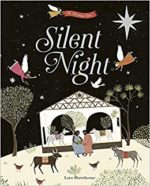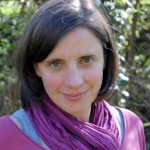 Chitra Soundar (text) & Poonam Mistry (artwork)
Chitra Soundar (text) & Poonam Mistry (artwork)
(Lantana Publishing)
It is a dark and stormy night in the Indian jungle and the baby animals are anxious. The wind huffs and puffs, the thunder clatters, the rain falls; no one can sleep, and everyone is a little frightened. Thankfully Mama Elephant is here to console them, with her wise words and knowledge about the intricate works of Mother Nature.
You’re Safe with Me is a melodic, almost-lullaby sounding text which is all about reassurance and understanding nighttime creaks and noises, and this makes it a perfect bedtime story. It is also a wonderful ecological tale, an ode to the marvel of nature and how everything has its place and role. With her wise and carefully chosen words, Mama Elephant explains that sometimes scary things can be necessary.
The highly unusual and incredible elaborate artwork brings the Indian nighttime wilderness to life superbly, using a dark palette of colours and patterns inspired from traditional Indian printing techniques, as well as a really inventive use of negative space in otherwise highly illustrated spreads.
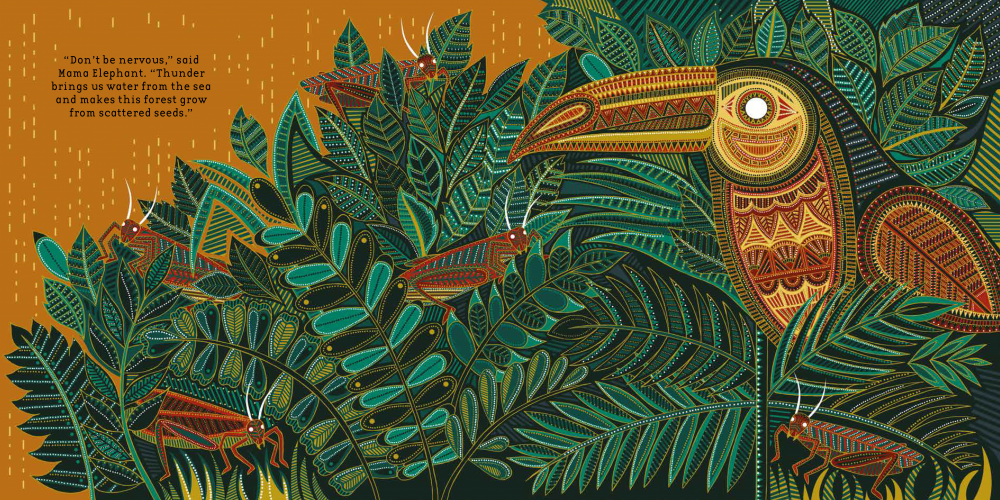
I was keen to find out more about the artwork and was therefore delighted that Poonam Mistry agreed to answer a few questions about it as part of the blog tour celebrating the publication of You’re Safe With Me:
The story behind the art:
a Q & A with Poonam Mistry
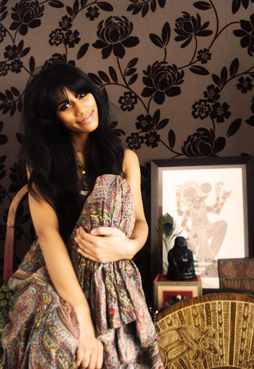
Hi Poonam, many thanks for agreeing to answer a few questions on your work for You’re Safe with Me! Firstly, could you tell us a little bit more about your background? How did you come to illustration?
I have always loved drawing. When I was at college I knew I wanted a profession in the art industry but it wasn’t until I was at university that I realised Illustration was the area I wanted to specialise in. During my Art and Design Foundation course a few friends and myself went to visit an exhibition that was showcasing illustrators that were emerging and those already established. I was blown away by some of the art that was exhibited there and knew this was something I wanted to do for a living. I then went on to study Illustration and have been illustrating ever since.
Can you tell us a little bit more about the artwork you created for You’re Safe with Me. What is your process?
First I was sent the manuscript from Lantana. Alice Curry and I met and discussed the direction of the book. What was great was I was given a lot of creative freedom for the aesthetics of the book, which meant I could really connect with the story and illustrate it the way I truly envisioned it. I then went away and produced a series of roughs in pencil. Once these were approved I began drawing the neater versions in ink on paper adding all the details and patterns within the animals. This was then scanned into the computer and finished using PhotoShop where I put everything together, added colour and the final details.
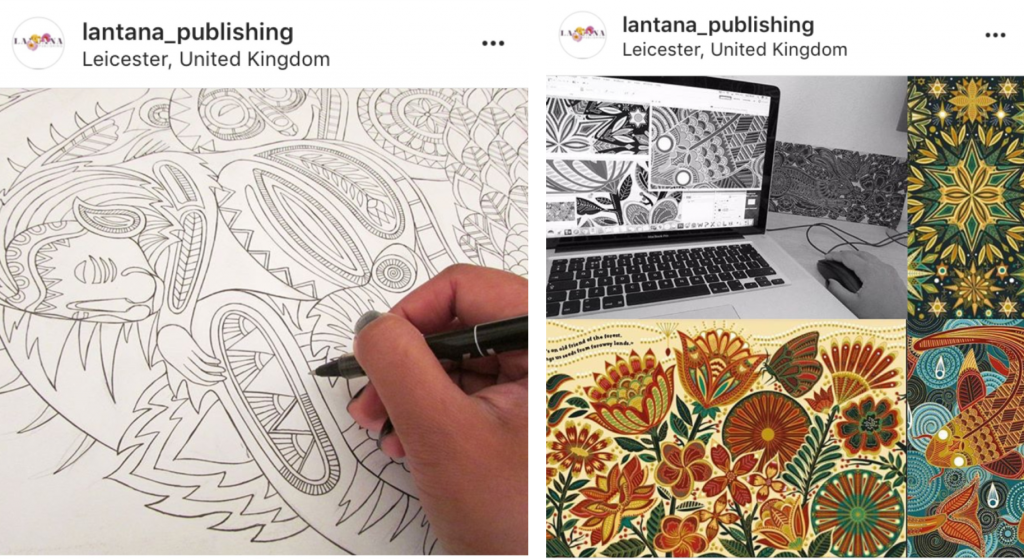
Source: Lantana Publishing’s Instagram
Your artwork appears to be very much inspired by folklore and traditional patterns, particularly found in Indian culture. Where did you find the inspiration for the artwork in You’re Safe with Me?
It is. I wanted my artwork to really reflect my identity. I was brought up in a house full of beautiful traditional Indian art and ornaments. One of the biggest sources of inspiration for me is kalamkari textiles. This is art created onto cotton and is an eco friendly process. The skill and craftsmanship that goes into creating these is just incredible and something I truly admire. I wanted elements of this to be reflected in the art I created for this book. I am also a huge fan of William Morris’s work and his patterned wallpaper designs. Parts of this are also weaved into some of the illustrations created for ‘You’re Safe With Me’.
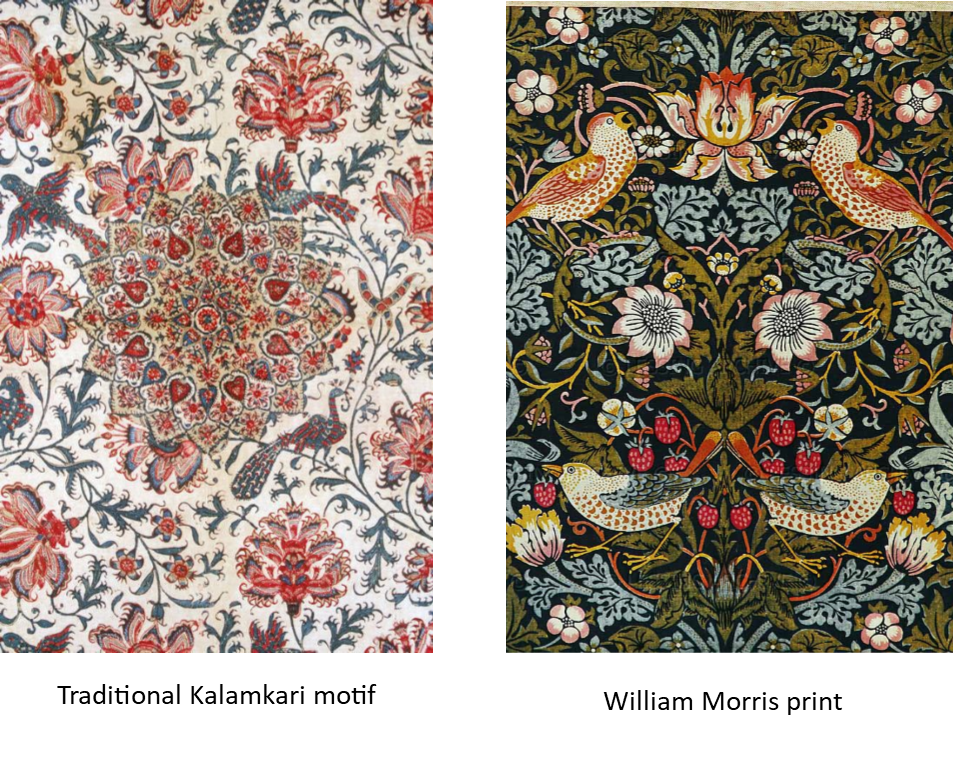
I think that when most people think of Indian patterns, they think of vivid colours, but your artwork here is much darker, which is a very unusual palette for a picturebook, but works perfectly to convey night-time. Is it difficult to work with darker colours (in the design as well as the illustrating), and how did you come up with the idea of using negative space for the eyes (which I love)?
Actually it was much easier. When people think of Indian art they usually think of bright oranges and pinks and yellows. I much prefer muted palettes of colour such as the creams, maroons, browns, oranges and black. When I read the manuscript for You’re Safe With Me I had a few palettes of colour already in my head. I feel much more comfortable using darker tones of colour than lighter ones. I think it works better with my style of work.
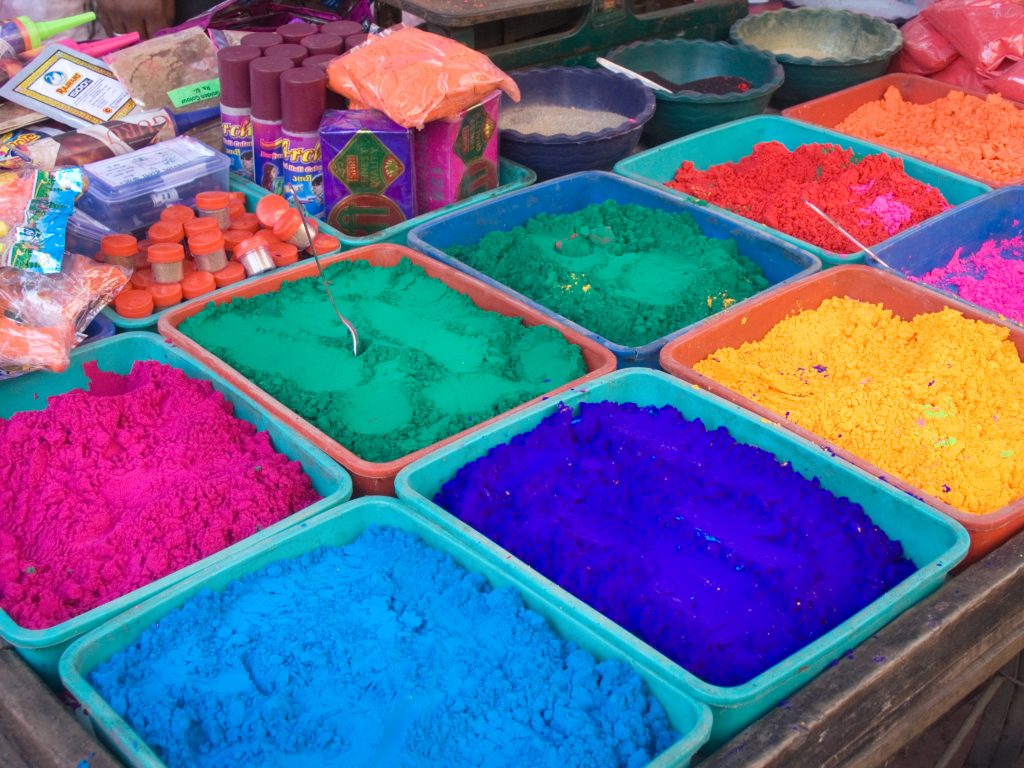
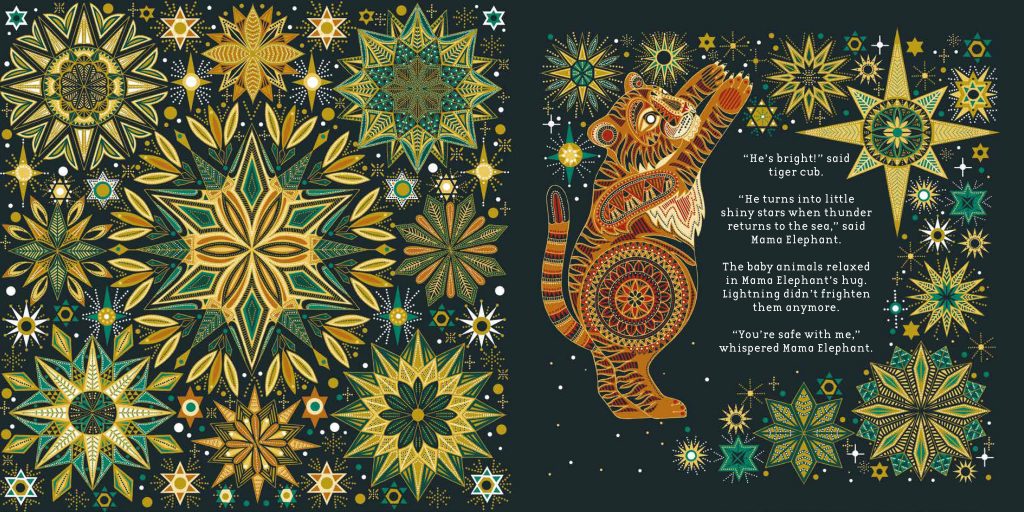
The negative space for the eyes of the animal is something I have always done. When I was at university establishing my style I played around with different eye shapes and this was one of a few ways I felt worked well with my style. The only exception is when I draw people; the eye shape is more human looking in this case. It also worked well in making the baby animals look alert and scared which was a bonus.
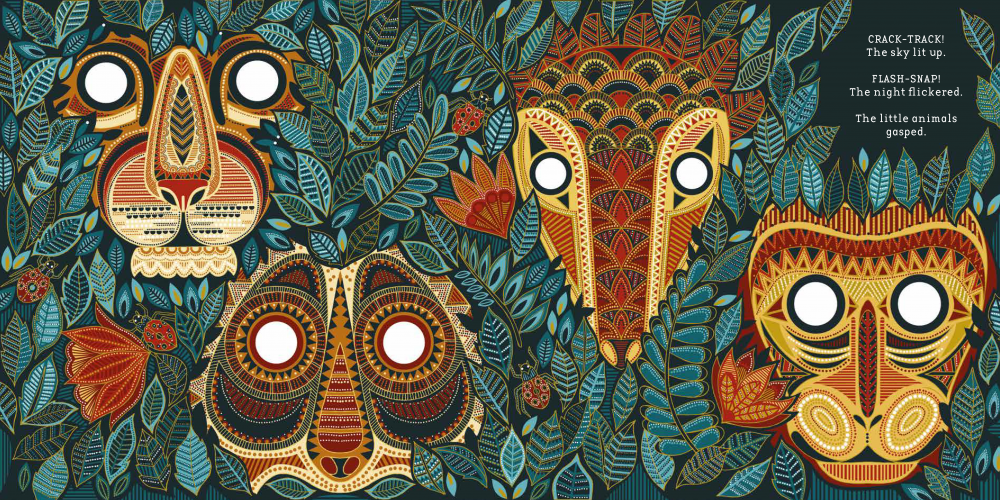
Each spread is incredibly intricate. How long does it take you on average to create an illustration?
If I am having a good week usually 4 days per spread. Unfortunately that isn’t always the case. Sometimes the ideas and compositions I had envisioned in my head don’t always work. In this situation it can take a week. This is mostly because the process of creating the art is split into two: drawing by hand and then completing on PhotoShop.
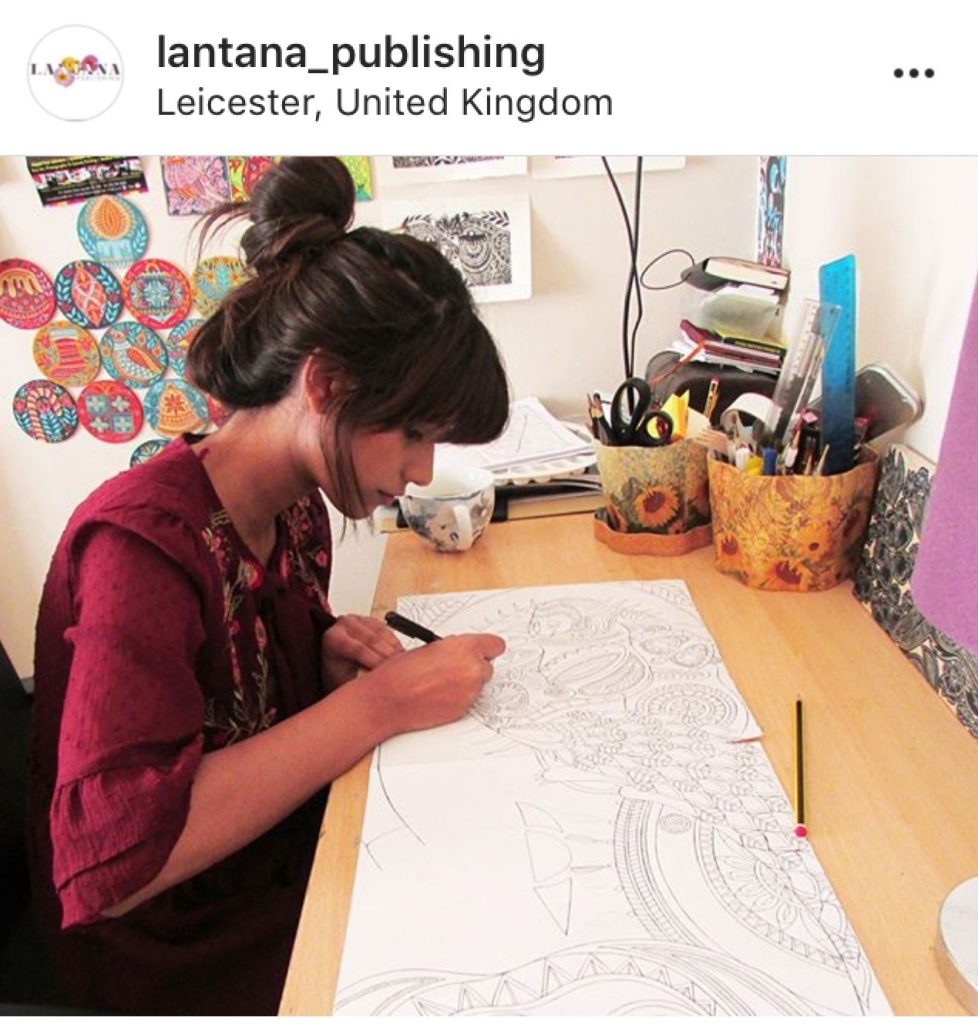
Source: Lantana Publishing’s Instagram
Finally, if you could illustrate any story, traditional or not, which one would it be?
I would love to do a whole illustrated version of the Panchatantra by Vishnu Sharma – a book full of interwoven fables which I have started work on as a self initiated project. Another would be Richard Adams’s Watership Down – a favourite of mine.
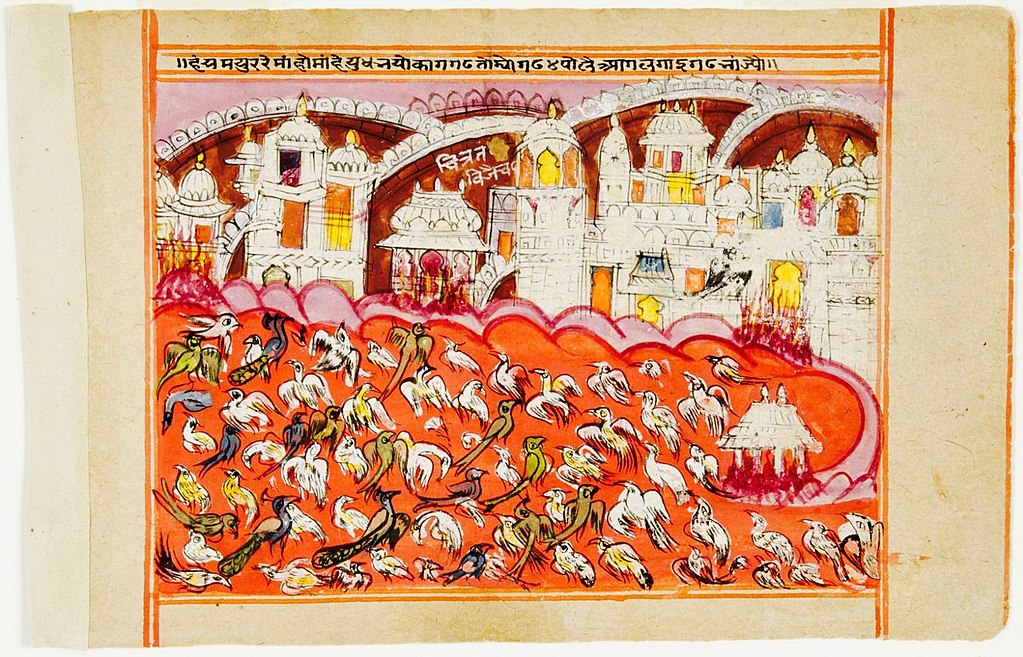
***
Thank you so much Poonam for answering my questions.
You’re Safe with Me is released on May 3rd and you can purchase a copy here.
Follow the rest of the blog tour:
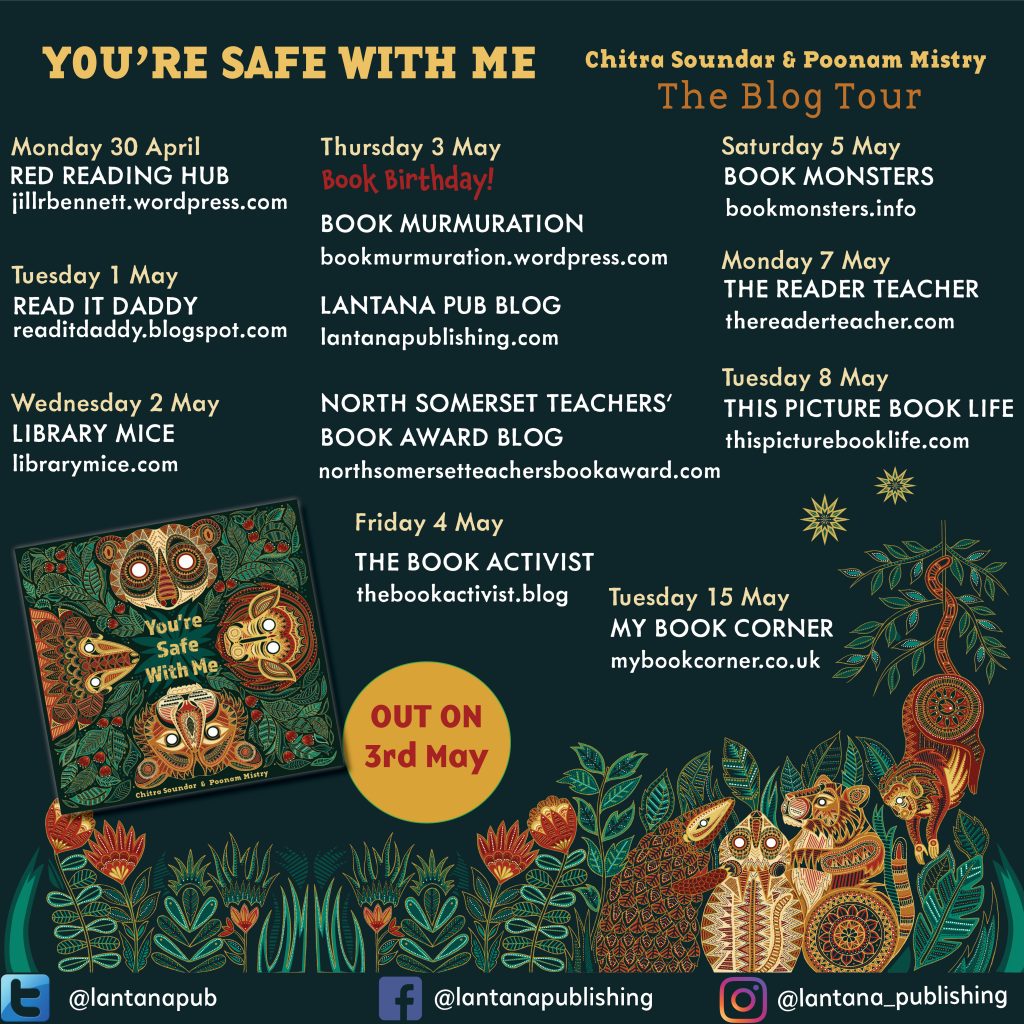
Review copy kindly supplied by the publisher.


